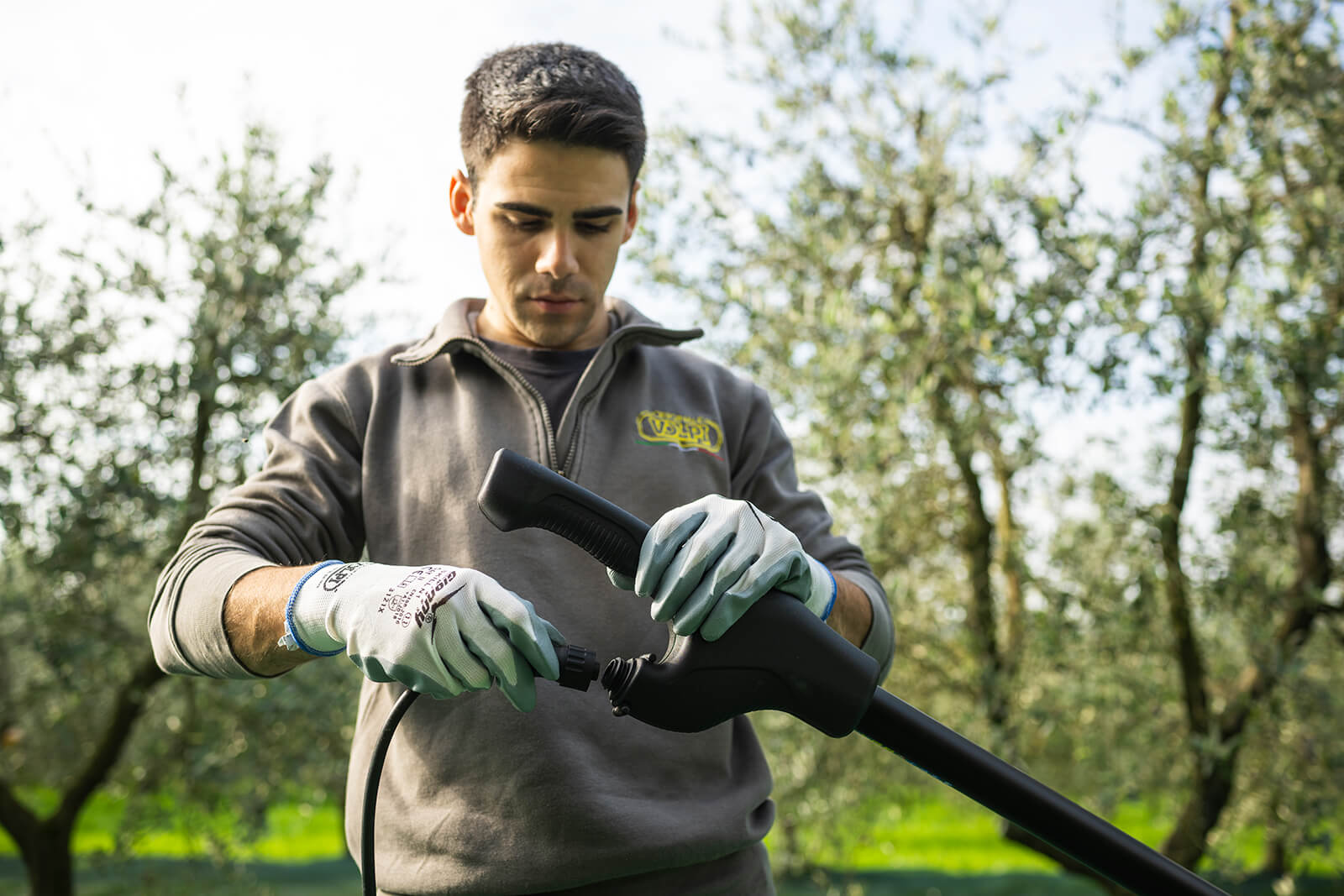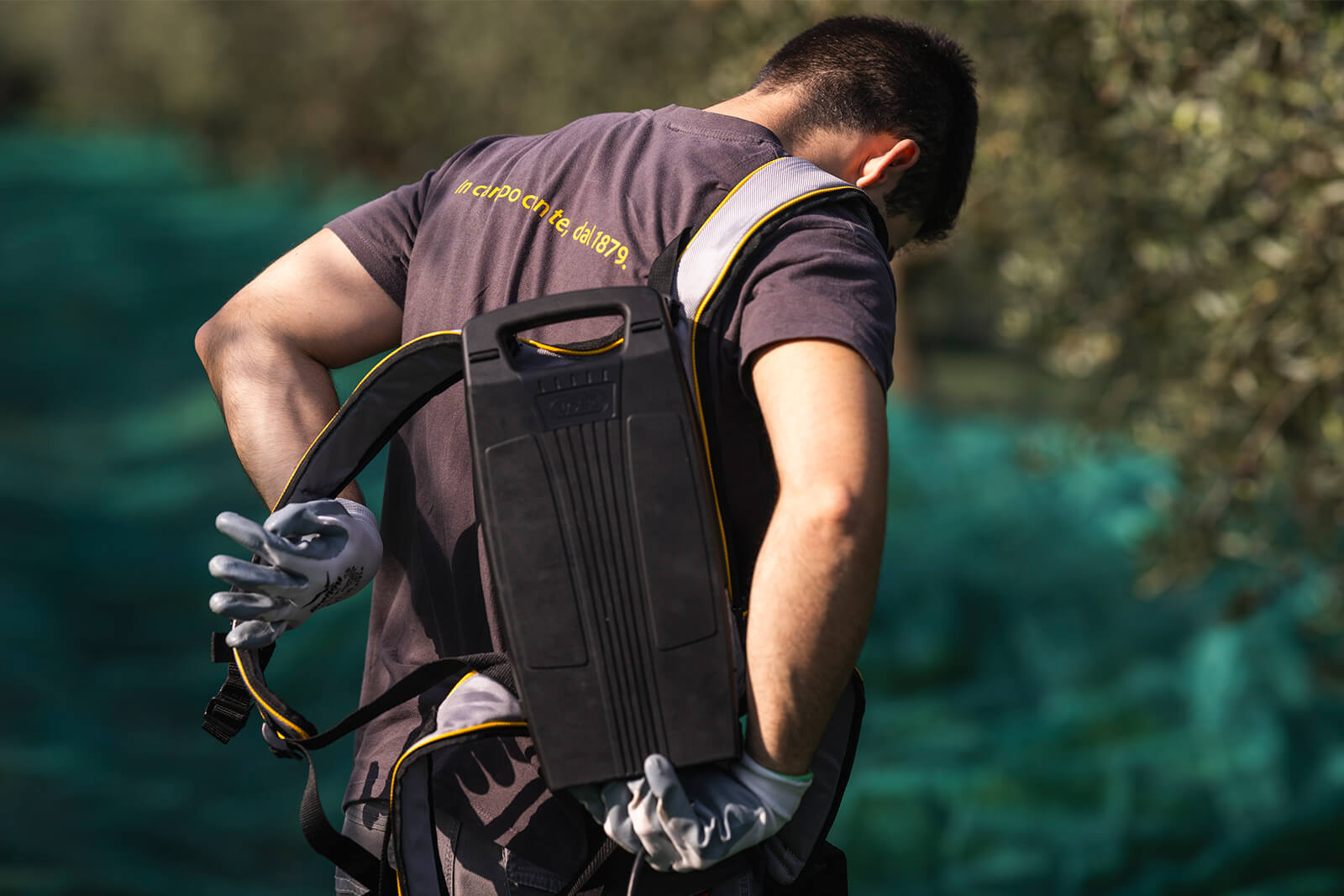The olive harvest is a crucial time for those who grow or enjoy olive grove. Once the season is over, however, it is crucial to take care of the tools used. Proper maintenance not only makes them ready for the next season, but also prolongs their life, avoiding unnecessary waste and additional costs. We guide you step by step on how to clean and store tools after the olive harvest.
Why is it important to clean tools?
After a busy season, tools can accumulate dirt, plant debris, and oil which, if not removed, can cause:
- Corrosion and oxidation of metal parts;
- Malfunctions due to fouling;
- Damage to electronic or mechanical components, in the case of motorised tools;
Proper maintenance ensures efficiency, safety, and savings over the long term.

Tools needed for cleaning
Before you start, make sure you have available:
- Hard and soft bristle brushes;
- Microfiber cloths;
- Degreasing solvents or neutral detergents;
- Lubricating oil;
- Rustproofing spray;
- Protective gloves.
Cleaning steps
- Remove coarse debris: Use a brush to remove soil, leaves and debris from tools. This step is especially important for rakes and harvesters.
- Thorough washing: Wash tools with warm water and a mild detergent. For motorised tools, avoid getting electronic parts wet.
- Thorough drying: After washing, dry each part immediately with a dry cloth to prevent rusting.
- Treatment of metal parts: Apply a lubricating oil or anti-rust spray to metal parts to prevent oxidation.
- Cleaning of motorised parts: Carefully check and clean the filters and air intakes. For rechargeable batteries, be sure to store them in a dry and frost-free place, and recharge them according to the directions in the corresponding user’s manual.
Tool storage
Once cleaned, it is important to store the tools properly:
- Dry and ventilated environment: Store tools in a place protected from humidity to prevent rusting.
- Appropriate supports: Use hooks or shelves to avoid direct contact with the floor.
- Protective cases: For more delicate or expensive tools, consider using specific cases or covers.

Tips for long-term maintenance
- Periodic Checks: Regularly check the condition of tools even out of season.
- Replacement of worn parts: Contact your nearest authorised dealer or service center.
- Disconnected battery: Remember to disconnect the battery from the machine during periods of inactivity.
Taking care of olive harvesting tools is an investment of time that pays off in terms of durability and functionality. Follow these tips to keep your tools efficient and ready to tackle a new harvest season. If you are looking for more information, visit our blog or contact us directly! Check out our User’s Manuals for more details and tips on equipment use and maintenance.
FAQ
This section collects frequently asked questions and their answers, summarising the main points of the article.
1. How do you clean the harvesters?
Thoroughly remove dust and plant debris from the motor slots and tines after each use. Use an air compressor to reach even the most difficult parts.
2. What are the necessary lubrication steps?
Lubricate moving parts regularly with oil. This protects the plastic components and reduces the risks of wear and damage due to humidity.
3. How to store the harvester when not in use?
Store the olive harvester in a dry place away from dust and humidity. Store it in a plastic bag for extra protection during periods of non-use.
4. What are the procedures for maintaining rechargeable batteries?
Keep batteries in a dry place and away from frost. Always follow the directions in the user’s manual to recharge them properly and ensure their service life.
5. How to replace damaged tines?
Consult the manual for your model of harvester and follow the replacement instructions. Get in touch with your reseller, use only original replacement parts to ensure proper operation.